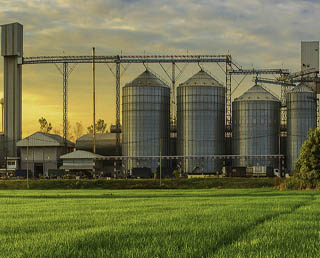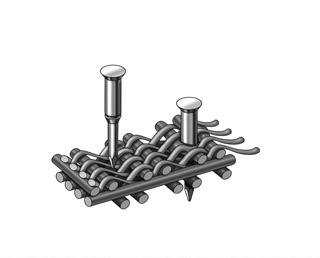Keeping Efficiency and Safety in Mind When Transporting Grains
 Grain is an important staple in diets around the world, and despite health trends, the growth of whole grains is expected to continue to rise steadily through 2021. This is good news for grain processors as demand continues for their product. And at Flexco, we are consistently trying to find ways to make the belt conveyor systems that transport grain safer and more efficient.
Grain is an important staple in diets around the world, and despite health trends, the growth of whole grains is expected to continue to rise steadily through 2021. This is good news for grain processors as demand continues for their product. And at Flexco, we are consistently trying to find ways to make the belt conveyor systems that transport grain safer and more efficient.
We understand that the conveyors used in grain processing applications have their own set of unique challenges. The belts are oftentimes covered and fitted with cleaners to keep particulate emissions low, and explosion risks are a real possibility throughout the process.
So when a belt breaks or becomes worn to the point of needing to be replaced or repaired, there are two things on the mind of the operations manager: worker safety and limited downtime.
Vulcanizing belts – the pros and cons
Vulcanization is the first choice for many grain processors because the process heats the rubber and bonds it together, eliminating the opportunity for sifting and damaging the thin belts. The problem with vulcanization, however, is two-fold. One, every minute spent waiting for a vulcanizing team to come on site and repair the belt adds to lost production time. And two, over time, the oils in most whole grains – like wheat, corn, soybeans, and more – prevent the components of the splice from bonding so that vulcanization isn’t even a possibility.
So what can be done to get your belts back up and running as quickly as possible, regardless of how aged they are? Mechanical belt fastening – a quick, easy, and affordable repair that can be done on-site by your own crew. But it’s important to remember that not every mechanical belt fastener is created equal, especially when it comes to grain belts.
Minimizing explosion risks with mechanical fasteners
The ultimate goal of any grain processing operation is to get the materials moving on the conveyors without product loss and without increasing the potential for explosion.
The risk of explosion and the safety of your operation and your workers is your No. 1 priority. To minimize risk, a spark-free, Everdur® fastener is your best bet. Everdur fasteners are made from a tough copper and silicone alloy, so they are spark-free when compared to steel, non-magnetic, and abrasion resistant – the perfect choice for long wear life in dusty grain operations. The fastener should have Everdur hardware as well, whether they are attached with bolts or rivets.
 When choosing between a bolt- or rivet-attached splice, it’s important to remember that thin grain belts have very little top cover. Because of this, rivet-attached fasteners are often recommended. Instead of compromising the belt carcass with a bolt hole, rivets pass between the belt’s carcass fibers to ensure maximum grip without compromising the integrity of the belt.
When choosing between a bolt- or rivet-attached splice, it’s important to remember that thin grain belts have very little top cover. Because of this, rivet-attached fasteners are often recommended. Instead of compromising the belt carcass with a bolt hole, rivets pass between the belt’s carcass fibers to ensure maximum grip without compromising the integrity of the belt.
To steer clear of sifting at the splice area, a solid plate fastener with heavy-gauge plates are recommended. They provide longer wear life, even in high-tension grain applications, and provide a sift-free splice to keep materials on the belt. Also, look for a plate with a smooth, low-profile that will stop your fasteners from damaging other conveyor components like cleaners and pulleys. Flexco® Evedur BR6 Solid Plate Fasteners accomplished everything this grain processor needed, increasing splice and minimizing their explosion risk.
Increasing productivity
When choosing a fastening system, it’s always good to keep an eye out for time-savers as well. While manual installation is good, the ability to speed up splice time and ensure splice consistency are solid reasons to search for a fastening system with the option to install manually or with power installation. Power installation not only reduces splice time dramatically, but it also discourages repetitive use injuries for workers.
Published Date
December 05, 2018Product Group
- Mechanical Belt Fastening Systems
Industry
- Grain
Issues
- Belt Damage
- Explosion Risk